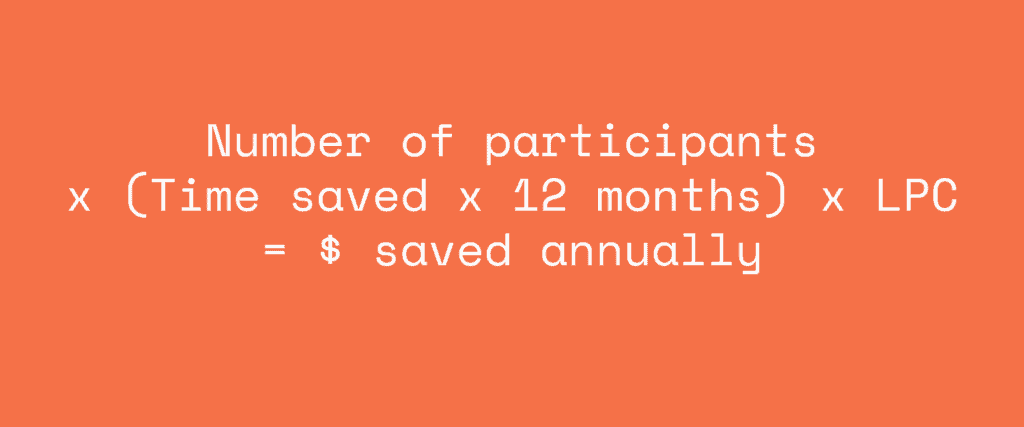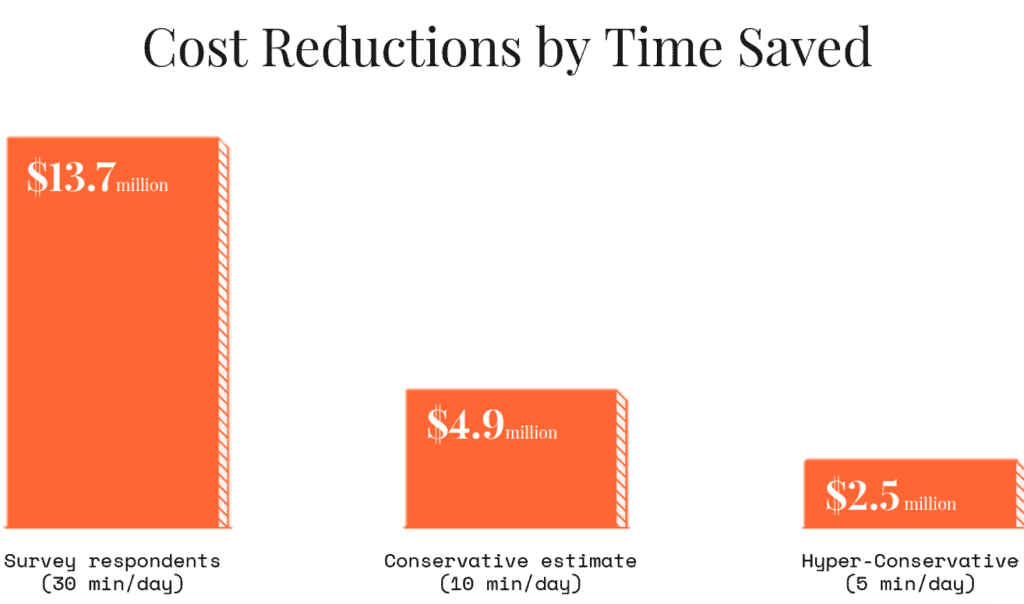How we helped a client save $2.5M by upskilling their staff
Through small, strategic tech tips, our client was able to save at least $2.5 million annually, while creating a faster, more tech-savvy workforce.
Capturing the ROI of a training program often feels elusive. Counting the number of “butts in seats” only refers to people who attended classes, which certainly doesn’t mean much if the class was required! The standard “smile sheets”, where people rate the facilitator or materials, only provide immediate feedback on a course—without evaluating the impact of the course long-term. The ideal metric would be tracking the long-term impact of learning opportunities, or, even better, the compounding effect of those opportunities over time (for info on training evaluation see Level 4 in the Kirkpatrick model).
Too good to be true? A headline of saving $2.5 million sounds optimistic, but the truth is, it is possible, even if using conservative numbers. We set out to measure the impact of a training program for a client. Here’s how the recurring, brief trainings amassed to more than $2.5 million in savings for the client.
Digital upskilling
One of our clients asked us to deliver a tech learning program for their employees. Over the course of the training program, we provided digital upskilling opportunities through a variety of learning formats. The trainings include 30- to 60-minute highly interactive classes, short videos, and online learning games, with a great portion of the content focusing on tips and tricks to improve effectiveness with technology. Our aim has been to create small chunks of “just in time” information that is relevant to the learners with opportunities to actually apply the skills in order to go beyond “awareness.”
Overall engagement with the content and qualitative feedback has been highly positive. Additionally, we captured quantitative metrics to help the C-suite clearly understand the value.
How to evaluate impact and ROI of upskilling staff
To go beyond the typical attendance and completion count, we wanted to evaluate the impact our content has on the audience. Without a lot of access to pre- or post-data on usage or time spent with technology, we decided to rely on a survey of class participants with the expectation that they are also the primary consumers of the additional resources and tech tips we publish. The primary goal was to estimate the amount of time class participants felt they saved from engaging with our various learning opportunities.
One key element to consider is the compounding effect of learning. Incorporating a single tech tip each week can shave small amounts of time off of what it normally takes to complete a task. The compounding effect of multiple tips over time by individual learners can help demonstrate the long-term value of a learning program, even when the tips are bite-size in nature.
How to measure ROI of digital upskilling
The formula we developed to calculate an ROI based on survey feedback included capturing the following data:
- Number of unique participants
- Time saved per month (based on a survey or other data point of time saved)
- Loaded payroll cost (LPC) per employee
Mapped out, the ROI formula looked like:

The results of digital upskilling
In the survey, participants estimated that they saved between 30 minutes to 2 hours per day because of the learning program. With an average of 22 business days per month, that amounts to roughly 10 hours saved per month.
When that time savings is multiplied across the 811 class participants across an entire year, assuming that the loaded payroll cost per employee is $141/hour, that amounts to $13.7 million in annual savings.
811 Participants x (10 Hours x 12 Months) x $141 LPC = $13.7 Million Annual Savings

To be conservative, we reduced time savings to just 10 minutes per day, which still amounts to an impressive $4.9 million in annual savings. To be hyper-conservative, assuming employees saved even just 5 minutes per day because of the trainings, the annual savings still amounts to $2.5 million.
This formula enabled us to demonstrate the quantifiable value of the training program—beyond just the positive feedback. Overall, with a small investment to deliver learning opportunities and small, strategic tech tips, we helped our client save at least $2.5 million annually, while creating a faster, more tech-savvy workforce.

